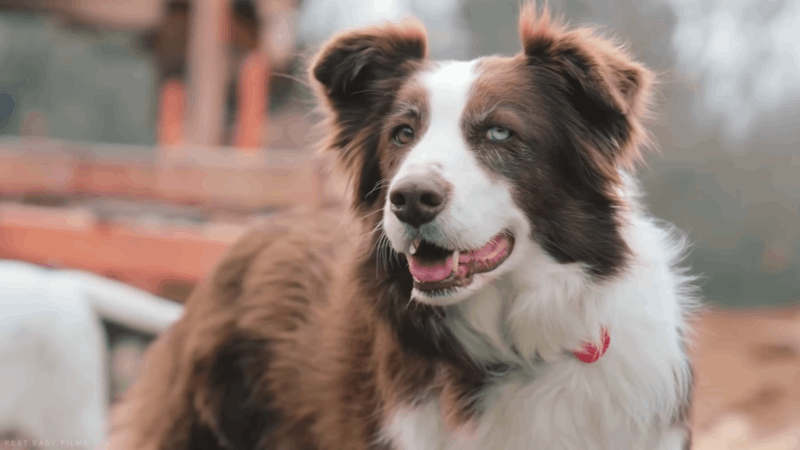No products in the cart.
Is your furry friend scratching incessantly or experiencing patchy hair loss, signs of mange in dogs, a common skin condition affecting canines worldwide? Understanding the ins and outs of mange is essential for every pet parent, from recognizing the symptoms to exploring effective treatment options.
In this blog, we will explore everything about mange in dogs, empowering you to take proactive steps towards restoring your pup’s skin health and overall well-being.
Understanding Mange in Dogs

Understanding mange in dogs is essential for pet owners to ensure their furry companions’ well-being. This skin condition can cause discomfort and distress to dogs, affecting their quality of life. Recognizing the signs of mange, such as hair loss, skin irritation and itching in dogs, is crucial for timely intervention. Seeking veterinary care promptly can help address mange effectively, improving the dog’s comfort and preventing potential complications.
What does Mange Look Like on a Dog?
Identifying the symptoms of mange on a dog’s skin is vital for quickly recognizing and addressing potential issues, safeguarding the health of our cherished pets. These are the main signs of dog mange that need to be taken into consideration:
- Hair loss, often in patches or localized areas
- Redness, inflammation, or sores on the skin
- Intense itching, scratching, and discomfort
- Crusty or scaly skin
- Secondary bacterial infections due to scratching and skin damage
If you notice any of these symptoms in your dog, get veterinary care right once for accurate diagnosis and treatment. Mange can be effectively managed with appropriate veterinary intervention, but early detection and intervention are key to preventing complications and ensuring your dog’s comfort and well-being.
Types of Mange in Dogs and the Difference
Mange in dogs primarily occurs in two forms: Demodectic mange and Sarcoptic mange. These types differ in their causative mite species, transmission, symptoms, and contagiousness. Understanding these distinctions is vital for recognizing and treating mange effectively.
Differences Between Demodectic and Sarcoptic Mange:
| Characteristic | Demodectic Mange | Sarcoptic Mange |
| Causing Mite Species | Demodex canis | Sarcoptes scabiei |
| Transmission | Not highly contagious | Highly contagious |
| Symptoms | Hair loss, localized redness, mild itching | Intense itching, widespread hair loss, redness |
| Contagious to Humans | Not contagious | Yes |
Understanding the differences between these two types of mange is essential for accurate diagnosis and effective management of the condition in dogs.
What Causes Mange in Dogs?
Mange in dogs is primarily caused by microscopic parasites known as mites. Dog skin and hair follicle infestations by these mites can result in a variety of dermatological issues. Here are some common causes of mange in dogs:
- Mite infestation: Mites like Sarcoptes and Demodex infest a dog’s skin, causing mange.
- Direct contact: Sarcoptic mange spreads through contact with infected animals or contaminated objects.
- Weakened immune system: Dogs with weak immune systems are more prone to mange.
- Stress: A dog’s immune system may be weakened by stress, leaving it more prone to mange.
- Poor nutrition: Malnourished dogs are more likely to develop mange due to weakened immunity.
- Underlying health conditions: Health issues like hormonal imbalances or allergies can predispose dogs to mange.
- Genetics: Certain varieties of mange may be genetically predisposed in some dogs.
Understanding the causes of mange in dogs can help pet owners take preventive measures and seek prompt veterinary care if their dog develops skin problems. Early detection and treatment are key to managing mange effectively and preventing its spread to other pets or humans.
Can Humans Get Mites from Dogs?

Humans can acquire mites from dogs, especially in cases of sarcoptic mange. Although these mites typically prefer canine hosts, they can infest humans upon close contact with an infected dog or exposure to contaminated items such as bedding or furniture. This transmission can lead to a condition known as scabies in humans, characterized by intense skin irritation and itching.
Considering the possibility of mite transfer from infected dogs to humans, it’s critical to get medical help as soon as you come into contact with an afflicted dog to stop the illness from spreading to other family members or people in close quarters.
Cure for Mange in Dogs

Dog mange therapy varies depending on the type of mange, the extent of the infestation, and the dog’s general health. Here are some common approaches to treating mange:
- Medication: Topical or oral medications like selamectin, ivermectin, or milbemycin oxime are prescribed to kill mites. Veterinarians may also recommend antibiotics or antifungal medications for subsequent infections.
- Medicated baths: Special shampoos or dips with ingredients like benzoyl peroxide or sulfur soothe skin, kill mites, and reduce inflammation in dogs. They’re used regularly under veterinary supervision.
- Environmental treatment: Cleaning bedding, vacuuming, and using acaricidal sprays help eliminate mites from the home to prevent reinfestation.
- Nutritional support: A balanced diet with supplements supports the immune system and skin health, aiding recovery.
- Management of infections: Antibiotics or antifungal medications treat secondary infections caused by scratching.
- Regular monitoring: Follow-up appointments ensure progress, adjust treatment, and prevent recurrence.
- Isolation and hygiene: Isolate the infected dog and practice good hygiene to prevent spreading the mange.
Follow your vet’s advice and complete treatment even if symptoms improve early. This lowers the possibility of recurrence by guaranteeing that all mites are eliminated. With proper care, most dogs can fully recover from mange.
What Happens if You don’t Treat Mange in Dogs?
If left untreated, mange in dogs can lead to various complications and worsen over time. Here are some potential consequences of not treating mange:
- Progression of symptoms: Mange symptoms, such as hair loss, itching, and skin irritation, can worsen and spread to other parts of the body.
- Secondary infections: Constant scratching and skin damage can lead to secondary bacterial or fungal infections, causing additional discomfort and complicating treatment.
- Chronic skin problems: Untreated mange can result in chronic skin problems, such as thickened, hardened skin (lichenification), and permanent hair loss in affected areas.
- Weakened immune system: Dogs with severe or persistent mange may have weakened immune systems, leaving them more vulnerable to illnesses and other infections.
- Emotional distress: The constant itching and discomfort associated with mange can cause significant emotional distress and affect the dog’s overall well-being and quality of life.
- Spread to other pets: Mange can spread to other pets in the household if left untreated, leading to multiple animals requiring treatment.
- Transmission to humans: While rare, some types of mange, such as sarcoptic mange, can be transmitted to humans, causing a condition known as scabies. This can result in skin irritation, itching, and discomfort for affected individuals.
Overall, it’s essential to seek veterinary care if you suspect your dog has mange to prevent these potential complications and ensure your pet’s health and comfort.
Can a Dog Recover from Mange on Its Own?
Dogs rarely recover from mange on their own. While some cases might show temporary improvement, mange typically requires veterinary treatment for full recovery. Leaving it untreated can lead to worsening symptoms and complications. Early intervention with proper medication and care offers the best chance of successful recovery.
Conclusion
Recognizing and addressing mange in dogs promptly is vital for their health. By understanding the signs and seeking veterinary care early, you can restore their coat and keep their tail wagging happily. Stay proactive, stay informed, and ensure your furry friend’s health and happiness.
Hello, I am Hazel Bennett, an experienced copywriter specializing in the fascinating topic of CBD for dogs. With a passion for pet wellness and extensive knowledge of CBD’s potential benefits, I am here to provide you with informative and engaging content.



